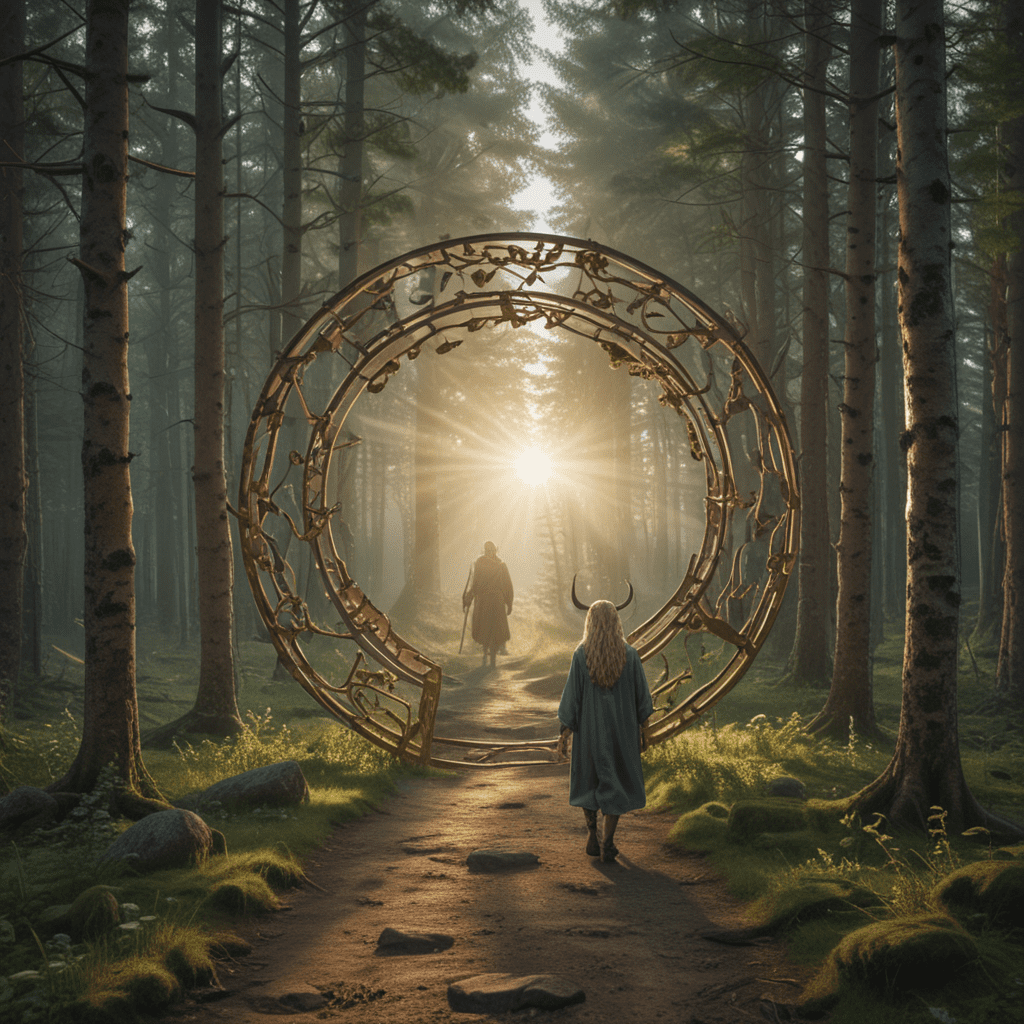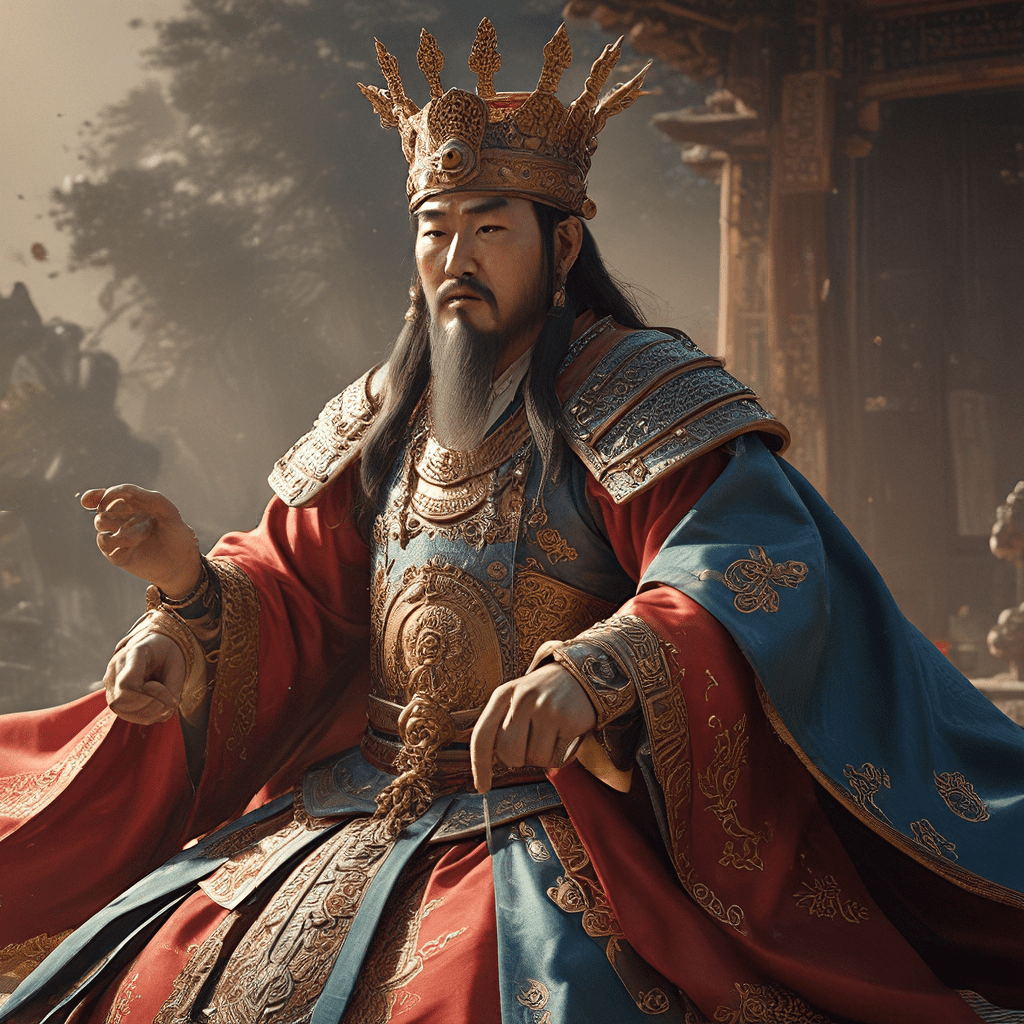The Symbolism of Boundaries in Finnish Mythology
Introduction
Finnish mythology, woven intricately into the fabric of Finnish culture, places great significance on the concept of boundaries. These boundaries demarcate not merely physical and geographical realms but also delve into the depths of the human psyche and the boundaries of time and knowledge. Understanding the symbolism of boundaries in Finnish mythology is crucial for unraveling the richness and complexity of this ancient tapestry of beliefs and traditions.
II. The Cosmic Boundary
The cosmic boundary represents the fundamental division between the upper and lower worlds in Finnish mythology. The upper world, often associated with the heavens and the realm of the gods, is contrasted with the lower world, which encompasses the realm of the dead and primordial chaos. The World Tree, a central figure in Finnish mythology, serves as a symbolic bridge between these realms, connecting the heavens to the underworld. The World Serpent, a formidable creature encircling the world, represents the boundary between the two worlds and the forces of chaos and order.
III. The Natural Boundary
Forests, lakes, and rivers play a prominent role in Finnish mythology as both physical and symbolic boundaries. These natural features often demarcate the boundaries between different clans and territories and are believed to be inhabited by nature spirits and guardian deities. The crossing of natural boundaries often signifies a transition or a dangerous encounter with the unknown. Forests, in particular, are seen as places of mystery and potential peril, where one can get lost or encounter malevolent spirits.
IV. The Social Boundary
Social boundaries in Finnish mythology delineate the divisions between clans, families, and social groups. These boundaries are maintained through customs, rituals, and taboos, ensuring the social order and harmony within the community. Marriage and initiation rituals serve as significant markers of social boundary crossings, symbolizing the transition from one social status to another. Transgressions of social boundaries, such as inter-clan marriages or breaking taboos, are often met with disapproval or even punishment.
V. The Psychological Boundary
Finnish mythology often explores the boundaries of the human mind and the distinction between the conscious and unconscious. Dreams and visions are seen as gateways to the unconscious, where individuals can encounter their fears, desires, and hidden knowledge. Delving too deeply into the mind, however, is believed to be dangerous, as it can lead to madness or possession by malevolent spirits.
VI. The Boundary of Life and Death
The transition from life to death holds immense significance in Finnish mythology. Death is seen as a journey to Tuonela, the realm of the dead, located beneath the earth. The dead are believed to cross a river to reach Tuonela, guided by a boatman named Tuoni. Myths and rituals surrounding death emphasize the importance of honoring the dead and ensuring their safe passage to the afterlife.
VII. The Boundary of Time
Finnish mythology recognizes the division between past, present, and future. Ancestors play a crucial role in the present, as they are believed to possess wisdom and guidance. Time travel, though rarely mentioned, is not entirely dismissed in Finnish mythology, with certain individuals possessing the ability to leap through time. Myths and beliefs surrounding time explore the cyclical nature of existence and the interconnectedness of different eras.
VIII. The Boundary of Knowledge
The distinction between known and unknown is a recurring theme in Finnish mythology. Shamans and wise men, known as tietäjät, serve as intermediaries between the world of humans and the realm of hidden knowledge. Seeking forbidden knowledge, however, is often portrayed as dangerous, with dire consequences for those who delve too deeply into secrets that are not meant to be known.
IX. The Boundary of Creation
Finnish mythology delves into the origins of the world and the boundaries of creation. The story of Väinämöinen, the ancient sage and cultural hero, is central to the creation myth. Väinämöinen sings the world into existence from the fragments of an eagle's egg and a duck's egg. Myths about the creation of the world explore themes of order emerging from chaos and the interconnectedness of all things.
X. Conclusion
The symbolism of boundaries permeates Finnish mythology, revealing the multifaceted nature of boundaries as both physical and metaphorical markers. These boundaries define the relationships between different realms, social groups, and the human psyche, emphasizing the importance of order, balance, and respect for the unknown. Understanding the symbolism of boundaries in Finnish mythology provides a profound insight into the beliefs, values, and rich imaginative tapestry of this ancient tradition.
FAQ
-
What are the main types of boundaries in Finnish mythology?
The main types of boundaries include the cosmic boundary, natural boundary, social boundary, psychological boundary, boundary of life and death, boundary of time, boundary of knowledge, and boundary of creation. -
Why are boundaries important in Finnish mythology?
Boundaries serve as markers of order, balance, and separation, defining the relationships between different realms, social groups, and the human psyche. -
What role do nature spirits play in Finnish mythology?
Nature spirits, known as haltijas, inhabit forests, lakes, and rivers, serving as guardians of these natural boundaries and influencing human interactions with the environment.
-
How is the boundary between life and death portrayed in Finnish mythology?
Death is seen as a journey to Tuonela, the realm of the dead, with rituals and beliefs emphasizing the importance of honoring the dead and ensuring their safe passage to the afterlife. -
What is the significance of shamans and wise men in Finnish mythology?
Shamans and wise men, known as tietäjät, possess the ability to access hidden knowledge and mediate between the world of humans and the realm of spirits, often playing a crucial role in rituals and ceremonies.




